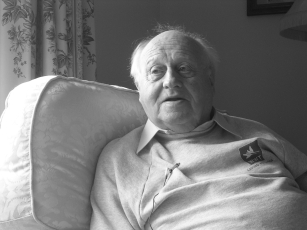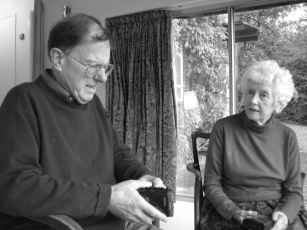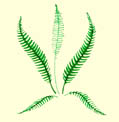The Fernhurst Society
Oral history project
How we made the interviews
The parish of Fernhurst is home to families who have lived here for generations working in agriculture and forestry and to others who arrived here more recently. Some came to work locally at Plant Protection and its successors and stayed. Others were attracted to living in this area, with easy commuting to London or Portsmouth. The post-war expansion, continuing to the present day, provided an opportunity for many to settle in this beautiful corner of Sussex. This project records the experiences of residents old and new.


Listen to an example:
Jean Staveley (b. Birmingham) in conversation with John Clark
First interviews
The first decisions to start an oral history project were taken in 1998, when a small group of members of the newly formed Fernhurst Society started to interview local residents in the latter part of the year. This handful of interviewers comprised Susan Whitley, Tony West and John Clark initially, supported by Carole Pope who transcribed the taped interviews to hard copy.
Some twenty interviews were carried out up to the end of 2002. This involved training for the interviewers and the formalisation of procedures so that everyone involved was “singing from the same song sheet”.
Copyright, training and long term storage
An essential factor was the agreement of a formal copyright declaration which was acceptable to the interviewees and gave the Society the authorisation to make the records available to public inspection. Copies of all tapes recorded are held in the village Archive and, provided the interviewee has agreed, they are available to be borrowed.
Professional assistance and training in all of this came from, among others, Portsmouth University, the West Sussex Records Office and publications from the Oral History Society and the Historical Association.
A set of cassette recorders and microphones of good sonic quality were obtained that were also unobtrusive and easy to operate. Where possible, the best audio quality has been obtained using a good quality stereo cassette recorder with a pair of tie-clip (lavalier) mics, one mic for the interviewer and the other for the interviewee. The mics are positioned fairly close (about 18 inches from the speakers' mouths), and with the recording level carefully adjusted at the start of each interview so that the speech has a strong signal without overloading.
Transfer of the material from tapes to more durable forms of storage, such as CDs, has been carried out by Richard Ranft from the start of the project and the original tapes are held on our behalf for safe keeping by the West Sussex Records Office.
Expanding interviews
By 2003 Brian Silver joined the interview team and subsequently other members of the Society took on the task of transcribing the tapes. The project was becoming better known in the parish and it was found that virtually everyone who was approached regarding an interview was agreeable. Added to this, new suggestions for candidates for interview were made and we have had for some time a “potentials” list of some forty people, which so far we do not seem to have managed to reduce because as fast as we interview, more names are added!
Expanding project
In early 2003 it was proposed to widen the scope of this project to make more accessible the emerging picture of life through the previous century. Other members of the Society became involved, including Elaine Ireland, Nick Unsworth and Arthur Waitt, and enthusiastic support was given for this expansion. Notably, Julia Roxan and Helen Ouin proposed the publication of what became the “Voices of Fernhurst”.
Another group of volunteers was formed and led by Anthony Davies, gained funding from the Local Heritage Initiative (later transferred to the Heritage Lottery Fund) to enable the publication of the book, production of a website and this exhibition. Transcribing the interviews proved to be a lengthy process and was carried out by Pauline Colcutt, Jill and Anthony Davies and Carole Pope.
The book
The outcome, after some two years of hard work, was the publication of “Voices of Fernhurst”. By this time the number of interviews completed had risen to some 50 and it was possible to use about 35 of these in preparation of the book.
Much of the credit for the book goes to Sheila Checkley who read and extracted sections from the transcripts to create a themed narrative. The book was designed by Jackie Knight supported by photographic and artefact research by the Archive team of Christine Maynard and Brenda Newman and incorporating delightful illustrations by members of the Fernhurst Art Group. Helen Ouin wrote the historical introduction and Anthony and Julia undertook much of the proof-reading.
More help please!
We now have a new set of digital recording equipment that gives higher quality recordings. The number of interviewers has never risen above five at any time, although we have periodically advertised in the Fernhurst News, and we very much hope that this website will stimulate your interest in becoming an interviewer or a transcriber. We hope that anyone who would like to discuss this further will contact the Society.
Oral History Project



The Fernhurst Oral History Project was supported by the Local Heritage Initiative. The Local Heritage Initiative was developed by the Countryside Agency and was funded by the Heritage Lottery Fund and Nationwide Building Society.

